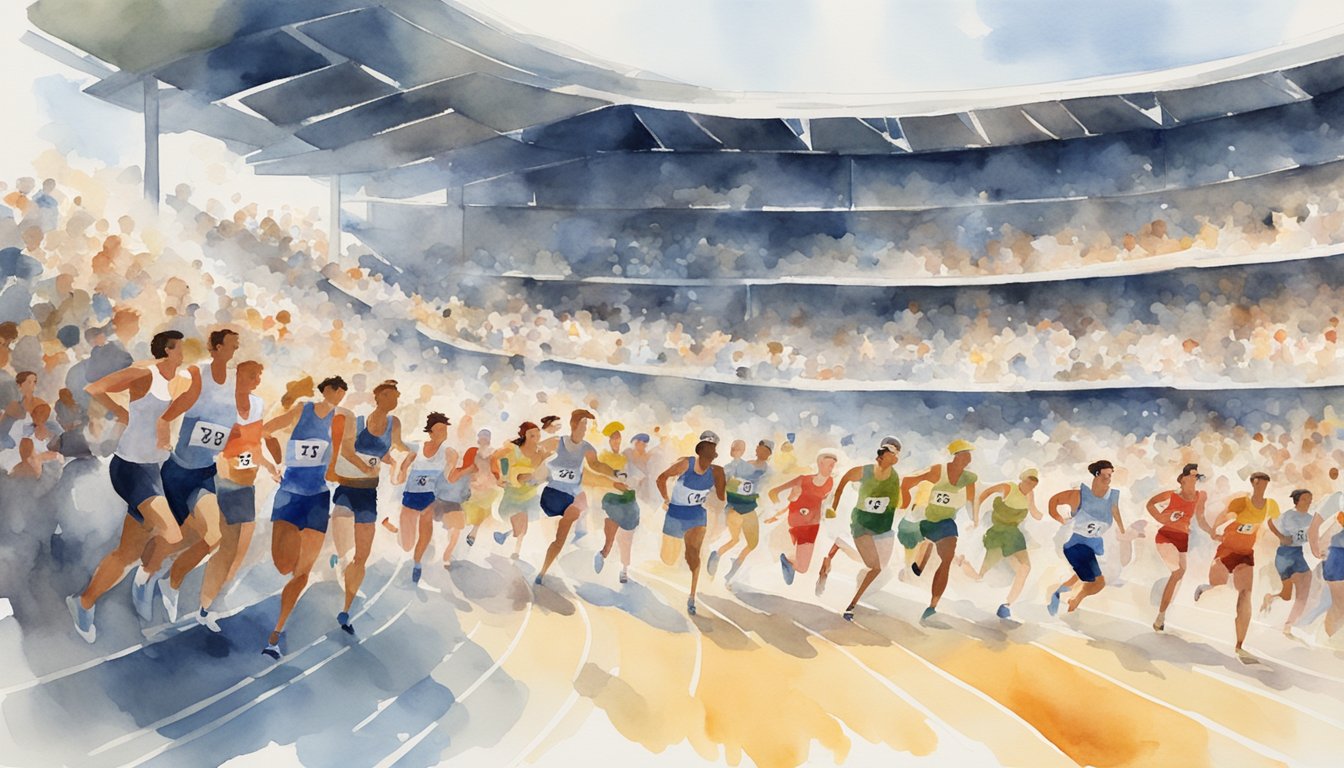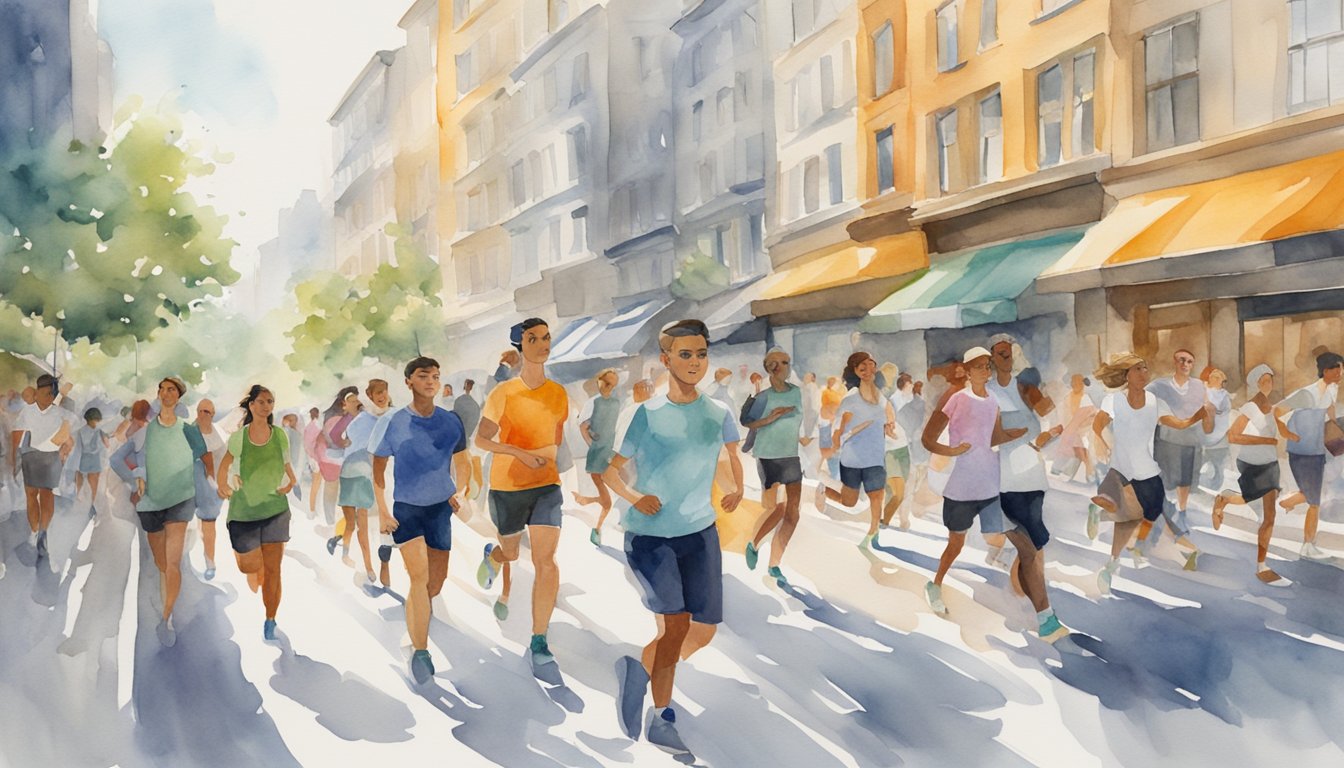Born from the 19th-century craze for competitive walking, modern pedestrian athletes continue to captivate audiences with their endurance and dedication.
These athletes draw on a long history of pedestrianism, where people would walk for days on end, often covering hundreds of miles. Today’s pedestrian athletes still push the limits of physical endurance, making it a thrilling sport to follow.

During the late 1800s, pedestrianism was one of the most popular sports, attracting large crowds and significant wagers.
Pedestrianism events often involved walking in circles for extended periods, challenging the athletes’ stamina and mental fortitude.
The sport has evolved over time, but the basic concept remains the same: walking as a test of willpower and endurance.
Modern pedestrian athletes not only compete in traditional walking events but also in more structured and regulated formats.
These include racewalking, which has become an Olympic event.
The heritage of pedestrianism is celebrated in new ways, reflecting the sport’s transformation and its impact on society.
Key Takeaways
- Pedestrianism emerged as a popular endurance sport in the 19th century.
- Competitive walking attracted huge crowds and significant wagers.
- Modern pedestrian athletes participate in structured and regulated walking events.
The Rise of Pedestrianism as a Spectator Sport

Pedestrianism, a form of competitive walking, gained popularity in the 19th century, attracting large audiences and becoming a well-known sport.
Major athletes and events highlighted the competitive nature and spectacle of the sport.
Notable Pedestrian Athletes and Their Legacy
In the 19th century, athletes like Edward Payson Weston and Ada Anderson became well-known for their walking feats.
Weston was famous for long-distance walks, captivating audiences with his endurance.
Anderson, known as the “champion lady walker of the world,” broke records by walking for weeks with minimal rest.
Another celebrated figure was Frank Hart, an African-American athlete who gained fame by winning high-stakes walking contests.
These celebrity athletes drew significant crowds and attention, contributing to the sport’s popularity.
Their legacies, marked by incredible physical endurance and public acclaim, set the stage for pedestrianism as a spectator sport.
Major Events and Turning Points
Key events cemented pedestrianism’s place in sports history.
The walk of Captain Robert Barclay Allardice, who walked one mile every hour for 1,000 hours, drew thousands of spectators daily.
Competitions at venues like Madison Square Garden attracted massive crowds.
Sir John Astley’s “long distance championship of the world” competitions were major turning points, promoted by newspapers such as the New York Herald and New York Times.
Gambling was also a huge part of these events, with large sums wagered on outcomes.
These events popularized walking competitions, making them a staple in cities like New York City.
Pedestrianism’s rise was fueled by these exciting competitions, celebrated athletes, and the cultural backdrop of post-Civil War America.
The sport eventually gave way to modern spectator sports but left a legacy of thrilling endurance contests.
Cultural and Societal Impacts of Pedestrianism

Pedestrianism, popular in the 19th century, has had notable influence on social integration and the development of modern sports.
This section explores two key areas: its role in social integration and its impact on today’s activities.
Role of Pedestrianism in Social Integration
Pedestrianism played a significant role in bringing diverse groups together.
Events often took place in bustling cities like New York City and Chicago, drawing large crowds.
These gatherings included men, women, and a mix of ethnic backgrounds, promoting a sense of community.
Spectators from all walks of life found common ground in their admiration for the athletes’ endurance and determination.
Over time, pedestrianism’s influence extended beyond major cities, inspiring events in smaller towns and even enchanting villages in Europe, where locals embraced the sport with enthusiasm.
This widespread appeal helped pedestrianism become a unifying force across different cultures and regions.
Figures such as Edward Payson Weston inspired many, demonstrating that walking could unify people from different walks of life.
During the civil war, pedestrianism was used to boost morale and foster unity among soldiers and civilians alike.
Gambling also contributed to social integration, as people from various social classes placed bets on their favorite walkers.
This common interest bridged social divides and created a unified spectator experience.
Influence on Modern Day Sports and Activities
The legacy of pedestrianism can be seen in today’s sports culture.
Modern walking races and marathons have roots in the endurance challenges of the 19th century.
The structure of these events often mirrors the long-distance six-day races that were once popular.
Pedestrianism influenced training techniques still used in modern athletics.
Historical figures from Britain and the United States popularized rigorous physical training, which has been adapted in current sports.
Additionally, pedestrianism’s popularity encouraged the creation of organized sports leagues and competitions worldwide, profound impacts seen in Australia and Canada.
This historic sport laid a foundation, leading to broad acceptance and enthusiasm for various athletic pursuits today.
Evolving Practices and Rules in Pedestrian Athletics
Over time, the sport of pedestrianism has developed new standards and faced various challenges.
These changes reflect shifts in both regulatory expectations and the practices of athletes.
Modern Standards and Regulatory Bodies
In contemporary pedestrian athletics, strict rules are essential to maintaining fair competition.
Governing bodies like the International Association of Athletics Federations (IAAF) and local organizations ensure that competitors adhere to specific guidelines.
Racewalking, a modern form of pedestrianism, has been included in the Olympic Games since 1904.
Standards cover aspects like proper form, race distances, and equipment.
Athletes must keep one foot in contact with the ground at all times to avoid being disqualified.
Regulatory bodies also oversee the use of indoor tracks for winter competitions, setting safety and measurement criteria.
These rules help prevent issues like cheating and ensure consistency across events.
Challenges and Controversies Around the Sport
Despite clear regulations, pedestrianism faces several challenges.
Controversies often arise around issues of cheating and fair play.
Some athletes might try to gain an unfair advantage, leading to disqualifications and disputes.
The early challenges to pedestrianism often involved determining what constituted legal walking, a debate that continues today.
In modern racewalking, technology and training methods sometimes blur the lines between fair competition and rule violations.
Additionally, the dynamic nature of ultra-distance walking competitions puts pressure on organizers to adapt rules to new scenarios.
These challenges highlight the ongoing need for vigilant regulation and fair enforcement in the sport.


